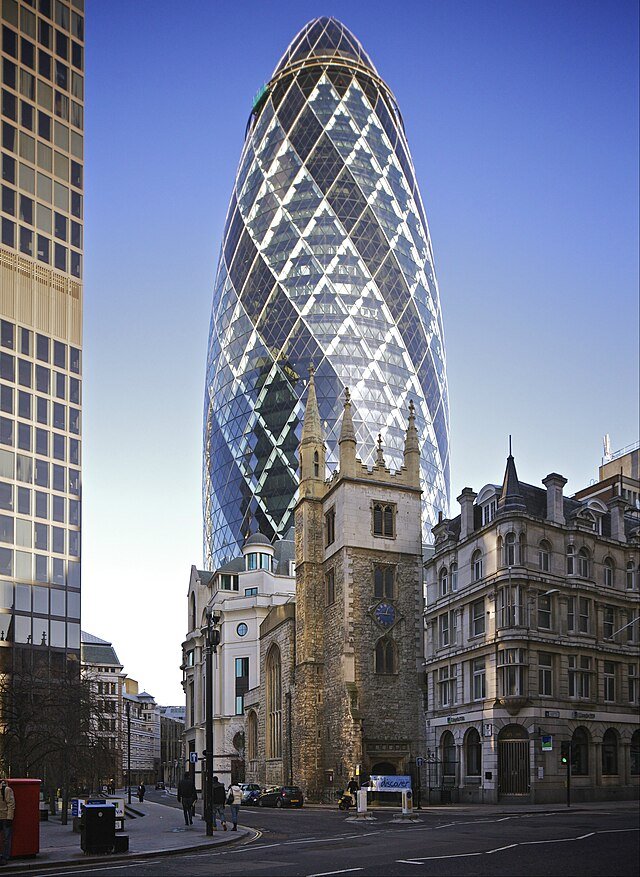The Gherkin: A Towering Triumph or a Phallic Fiasco?
Ah, the Gherkin – London's beloved cucumber in the sky, or as some less delicately put it, the city's very own phallic masterpiece.
Yes, you read that right. In the annals of architectural history, few buildings have garnered as much attention for their, ahem, suggestive shape as the iconic Gherkin. So why exactly is this towering edifice so often compared to a certain male appendage? Let's peel back the layers (pun intended) and delve into the curious case of the Gherkin's phallic reputation.
First and foremost, let's address the elephant in the room – or rather, the, er, pickle. The Gherkin's distinctive shape, with its sleek cylindrical form tapering to a point at the top, bears a striking resemblance to, well, you know. It's hard to ignore the similarities when faced with a building that looks like it could double as a prop in an adult film – albeit a very upscale, architecturally stunning adult film.
The Gherkin, Wikicommons, courtesy of Aurelien Guichard
But the Gherkin's phallic comparisons go beyond mere physical appearance. Oh no, my friend, they extend to the very essence of the building itself.
You see, much like a certain male body part, the Gherkin is a symbol of power and virility – albeit of the architectural variety. Standing tall amidst the London skyline, it exudes confidence and strength, commanding attention from all who behold its towering presence. It's like the architectural equivalent of a peacock strutting its stuff – albeit a peacock with a rather unconventional shape.
Of course, it's not just the shape of the Gherkin that invites comparisons to a certain male body part – it's also the reactions it elicits from those who encounter it. Picture this: you're strolling through the streets of London, minding your own business, when suddenly, you catch sight of the Gherkin looming in the distance. Your first instinct? To do a double-take faster than you can say "Freudian slip." It's as if the building has a magnetic pull, drawing the eye and inviting speculation about its clearly phallic nature.
But perhaps the most amusing aspect of the Gherkin's phallic reputation is the reactions it inspires from passersby. From giggles and snickers to raised eyebrows and knowing nods, the mere mention of the Gherkin's shape is enough to send even the most composed individuals into fits of laughter. After all, who can resist the allure of a building that looks like it could moonlight as a stand-in for a certain male body part?
In the end, whether you see the Gherkin as a towering triumph or a phallic fiasco is ultimately a matter of perspective. Some may marvel at its architectural brilliance, while others may chuckle at its suggestive shape – and hey, there's room for both viewpoints in this world. So the next time you find yourself gazing upon the Gherkin, take a moment to appreciate its unique charm – and maybe, just maybe, indulge in a bit of phallic humor. After all, life's too short to take skyscrapers (or certain male body parts) too seriously.

